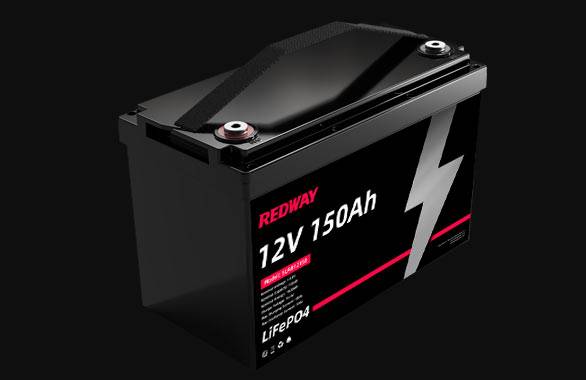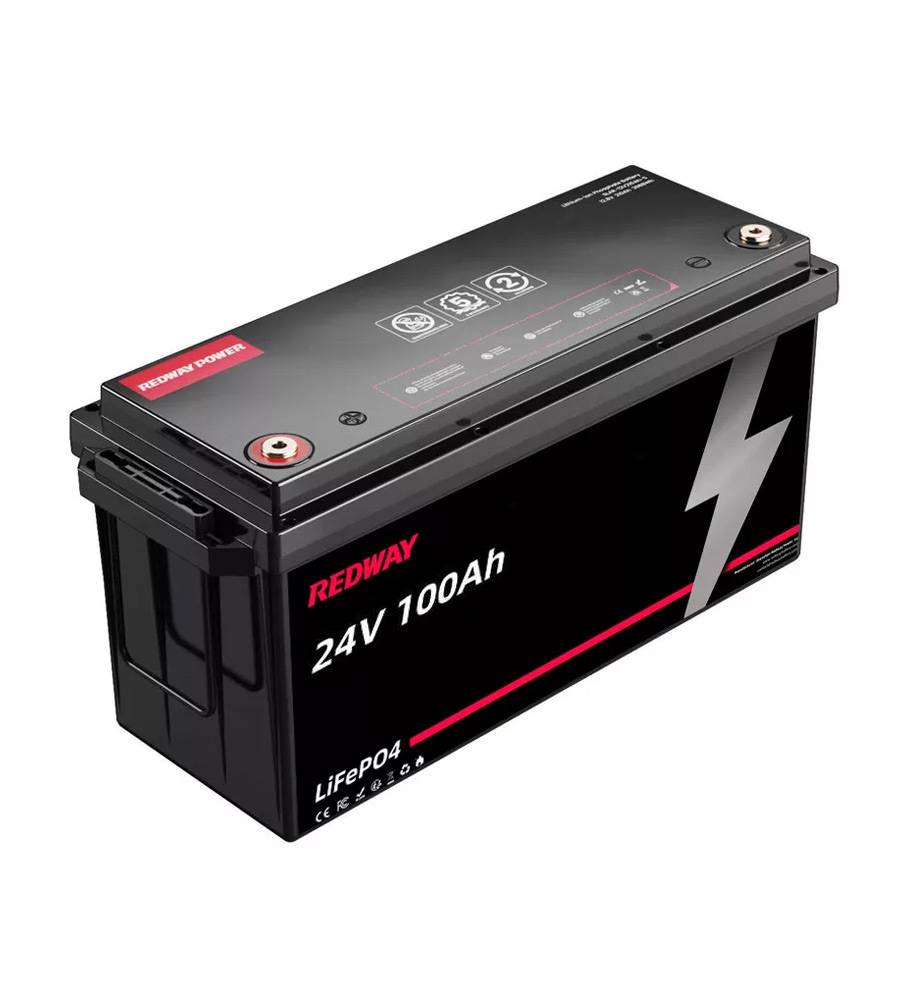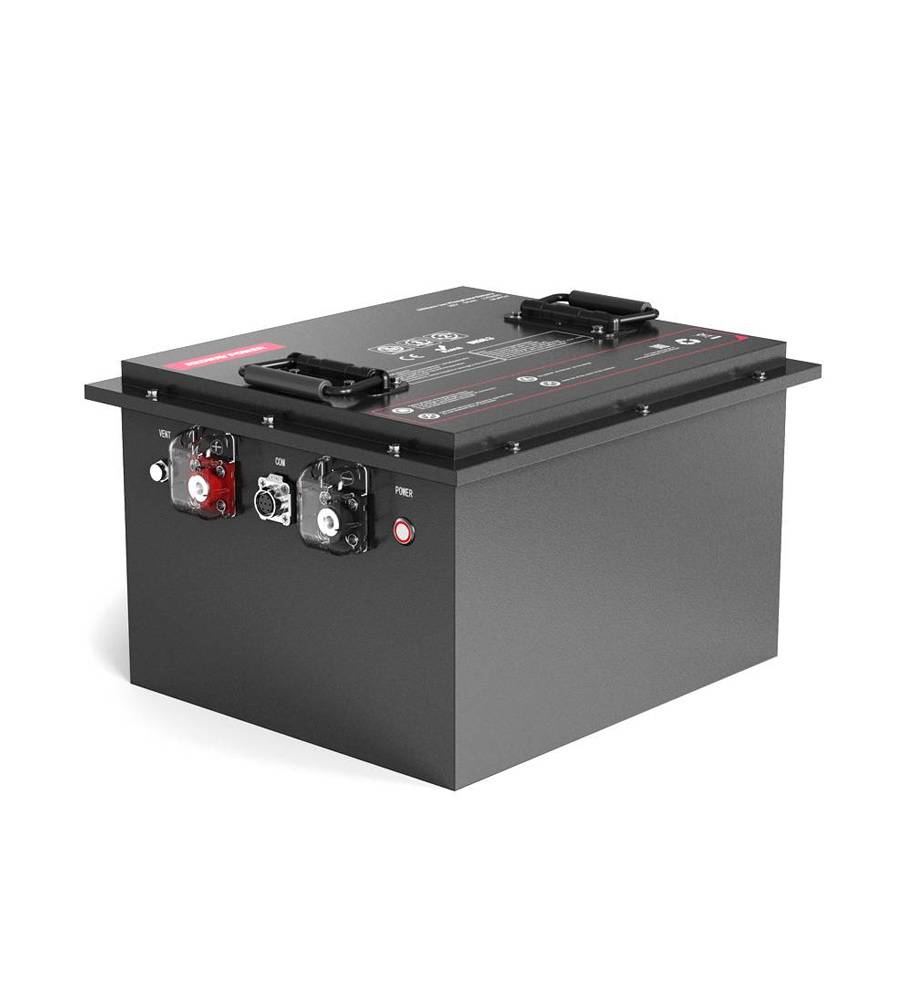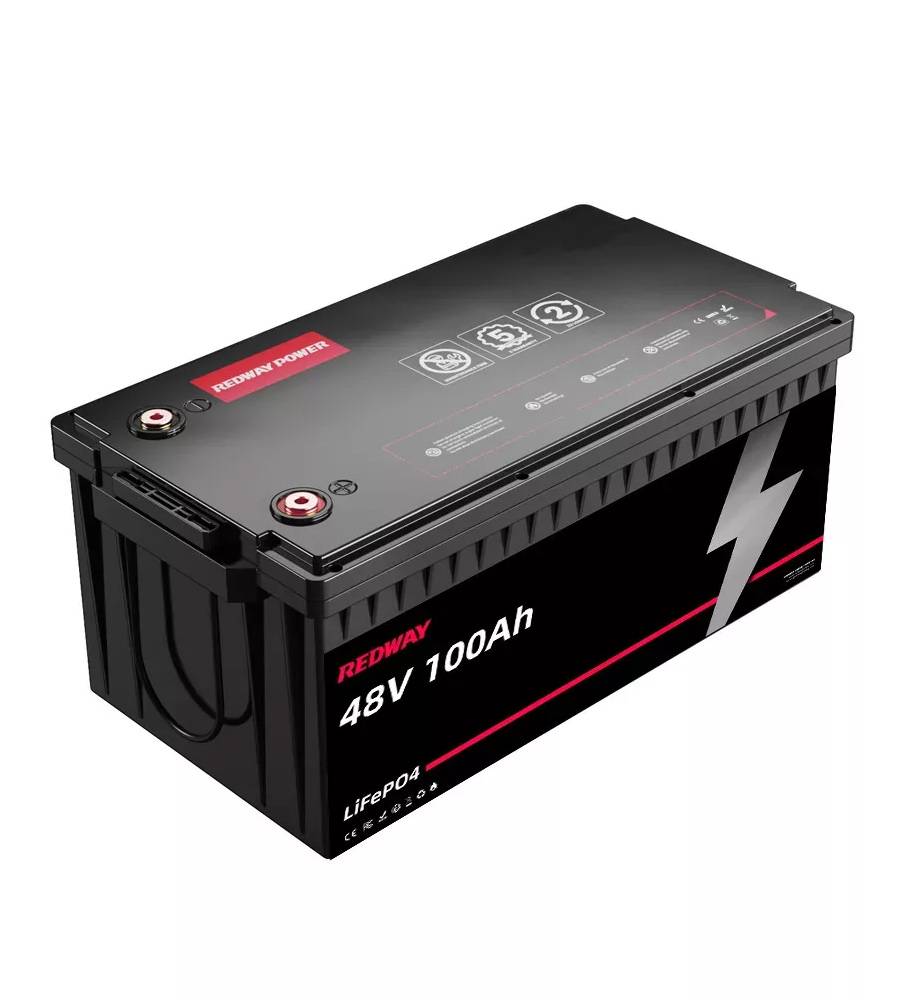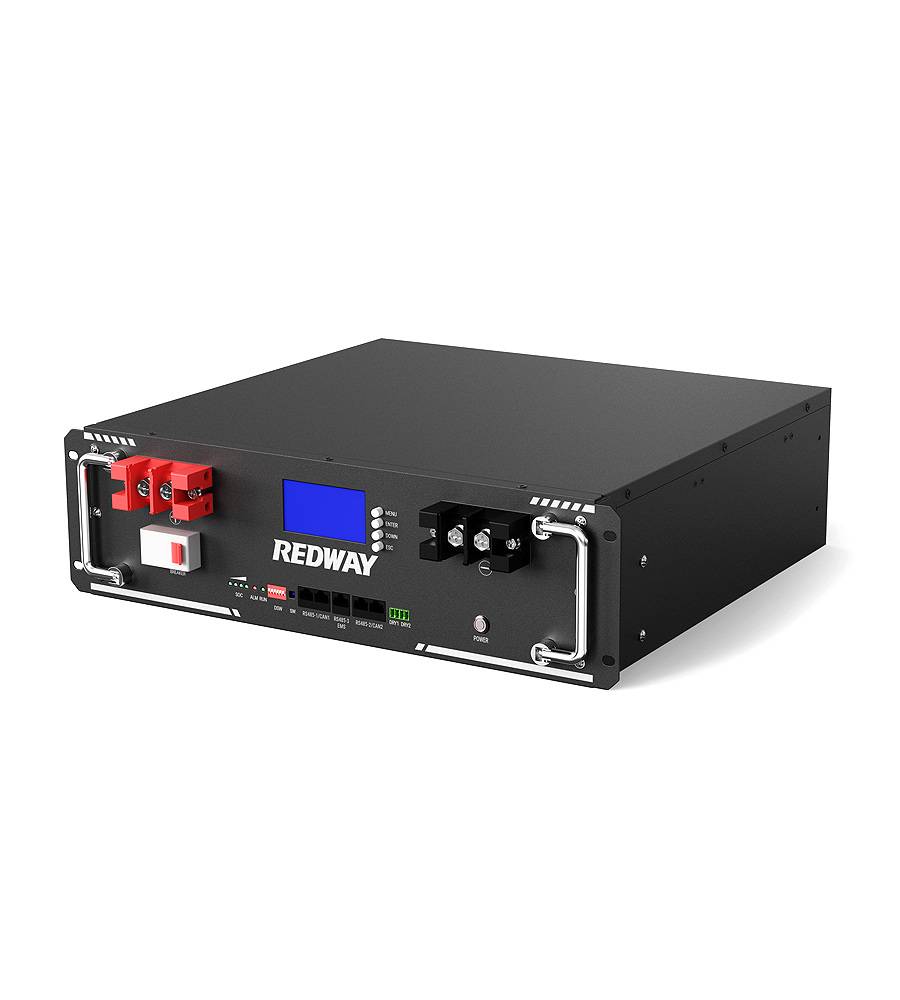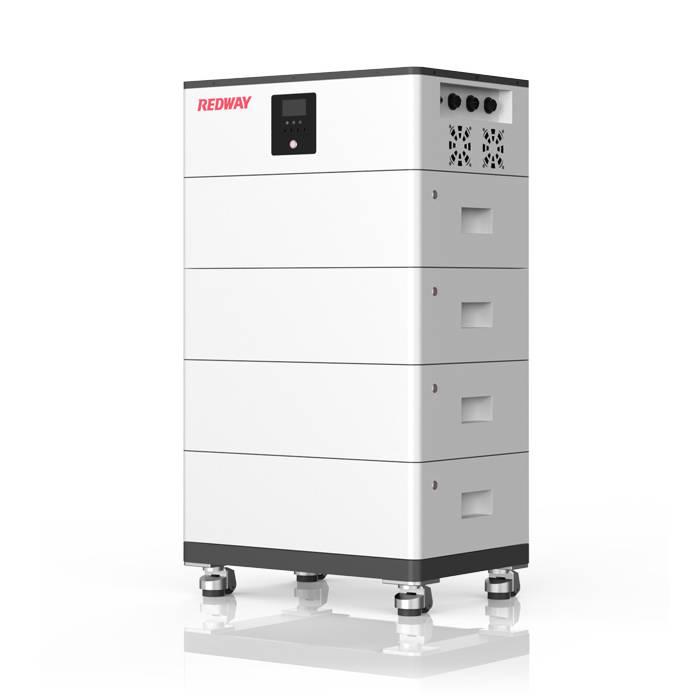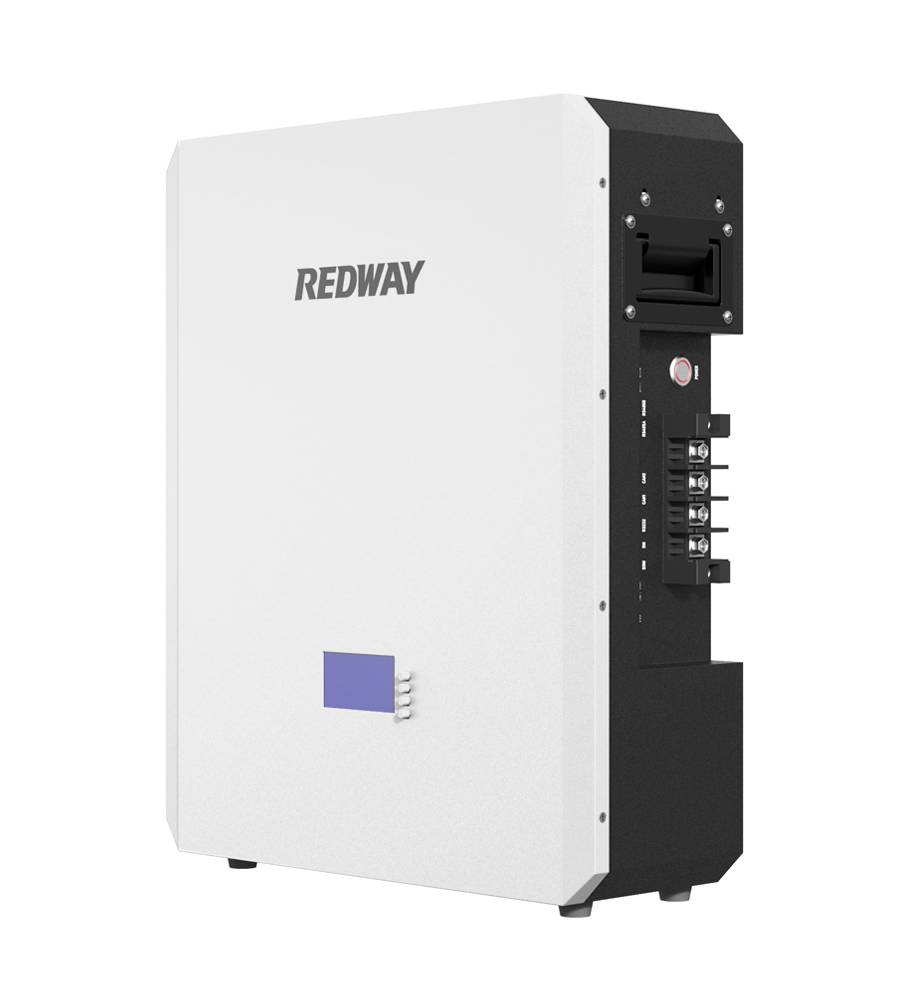- Forklift Lithium Battery
-
48V
- 48V 210Ah
- 48V 300Ah
- 48V 420Ah (949 x 349 x 569 mm)
- 48V 420Ah (950 x 421 x 450 mm)
- 48V 456Ah
- 48V 460Ah (830 x 630 x 590 mm)
- 48V 460Ah (950 x 421 x 450 mm)
- 48V 460Ah (800 x 630 x 600 mm)
- 48V 460Ah (820 x 660 x 470 mm)
- 48V 500Ah
- 48V 560Ah (810 x 630 x 600 mm)
- 48V 560Ah (950 x 592 x 450 mm)
- 48V 600Ah
- 48V 630Ah
-
48V
- Lithium Golf Cart Battery
- 12V Lithium Battery
12V 150Ah Lithium RV Battery
Bluetooth App | BCI Group 31
LiFePO4 Lithium
Discharge Temperature -20°C ~ 65°C
Fast Charger 14.6V 50A
Solar MPPT Charging - 24V Lithium Battery
- 36V Lithium Battery
- 48V Lithium Battery
-
48V LiFePO4 Battery
- 48V 50Ah
- 48V 50Ah (for Golf Carts)
- 48V 60Ah (8D)
- 48V 100Ah (8D)
- 48V 100Ah
- 48V 100Ah (Discharge 100A for Golf Carts)
- 48V 100Ah (Discharge 150A for Golf Carts)
- 48V 100Ah (Discharge 200A for Golf Carts)
- 48V 150Ah (for Golf Carts)
- 48V 160Ah (Discharge 100A for Golf Carts)
- 48V 160Ah (Discharge 160A for Golf Carts)
-
48V LiFePO4 Battery
- 60V Lithium Battery
-
60V LiFePO4 Battery
- 60V 20Ah
- 60V 30Ah
- 60V 50Ah
- 60V 50Ah (Small Size / Side Terminal)
- 60V 100Ah (for Electric Motocycle, Electric Scooter, LSV, AGV)
- 60V 100Ah (for Forklift, AGV, Electric Scooter, Sweeper)
- 60V 150Ah (E-Motocycle / E-Scooter / E-Tricycle / Tour LSV)
- 60V 200Ah (for Forklift, AGV, Electric Scooter, Sweeper)
-
60V LiFePO4 Battery
- 72V~96V Lithium Battery
- Rack-mounted Lithium Battery
- E-Bike Battery
- All-in-One Home-ESS
- Wall-mount Battery ESS
-
Home-ESS Lithium Battery PowerWall
- 24V 100Ah 2.4kWh PW24100-S PowerWall
- 48V 50Ah 2.4kWh PW4850-S PowerWall
- 48V 50Ah 2.56kWh PW5150-S PowerWall
- 48V 100Ah 5.12kWh PW51100-F PowerWall (IP65)
- 48V 100Ah 5.12kWh PW51100-S PowerWall
- 48V 100Ah 5.12kWh PW51100-H PowerWall
- 48V 200Ah 10kWh PW51200-H PowerWall
- 48V 300Ah 15kWh PW51300-H PowerWall
PowerWall 51.2V 100Ah LiFePO4 Lithium Battery
Highly popular in Asia and Eastern Europe.
CE Certification | Home-ESS -
Home-ESS Lithium Battery PowerWall
- Portable Power Stations
How to Effectively Budget for Electric Forklift Purchases and Upgrades
Budgeting for electric forklift purchases requires careful consideration of various costs, including initial investments and ongoing operational expenses. Understanding these factors, along with financial incentives and funding options, can help businesses make informed decisions that optimize their investments in sustainable technologies.
What Costs Should You Consider When Budgeting for Electric Forklifts?
When budgeting for electric forklifts, it’s essential to consider several cost factors, including purchase price, maintenance expenses, battery replacement costs, and charging infrastructure investments. Each of these elements contributes to the total cost of ownership (TCO) over the forklift’s lifespan.Chart Title: Cost Factors in Electric Forklift Budgeting
| Cost Factor | Description |
|---|---|
| Purchase Price | Initial cost of acquiring the forklift |
| Maintenance Expenses | Regular servicing and repairs |
| Battery Replacement | Lifespan costs associated with battery changes |
| Charging Infrastructure | Installation costs for charging stations |
How Do Operating Costs Affect Your Budget for Forklifts?
Operating costs play a significant role in budgeting as they directly impact overall profitability. Electric forklifts typically have lower operating costs compared to internal combustion models due to reduced fuel expenses and lower maintenance requirements.
What Are the Initial Costs of Switching to Lithium Technology?
The initial costs of switching to lithium technology can be higher than traditional lead-acid batteries; however, they offer advantages such as longer lifespan and faster charging times that can lead to overall savings in operational costs.Chart Title: Initial Cost Comparison
| Battery Type | Initial Cost Estimate | Lifespan (Years) | Maintenance Frequency |
|---|---|---|---|
| Lead-Acid | $150-$300 | 3-5 | Every 6 months |
| Lithium | $500-$800 | 8-10 | Annually |
How Do Lithium Batteries Compare to Lead-Acid in Terms of Cost?
Lithium batteries generally present a higher upfront cost but compensate through longer life cycles and reduced maintenance needs compared to lead-acid batteries. This makes them a more cost-effective option over time.
What Financial Incentives Are Available for Adopting Green Technologies?
Financial incentives such as tax credits, rebates, and grants are available at federal and state levels to encourage businesses to adopt green technologies like electric forklifts. These incentives can significantly reduce the effective cost of investment.Chart Title: Financial Incentives Overview
| Incentive Type | Description |
|---|---|
| Tax Credits | Reduce tax liability based on investment |
| Rebates | Direct cash back on qualifying purchases |
| Grants | Funds provided by government agencies |
How Can Energy Efficiency Improve ROI on Forklift Investments?
Investing in energy-efficient forklifts can improve ROI by reducing energy consumption and operational costs while enhancing productivity through better performance metrics.Chart Title: ROI Metrics
| Metric | Description |
|---|---|
| Energy Savings | Reduction in electricity bills |
| Increased Productivity | More efficient operations leading to higher output |
| Lower Maintenance Costs | Reduced frequency of repairs |
What Are Common Funding Sources for Fleet Upgrades?
Common funding sources include bank loans, leasing options that allow businesses to spread out payments over time, and government grants specifically aimed at promoting green initiatives.Chart Title: Funding Sources Overview
| Funding Source | Description |
|---|---|
| Bank Loans | Traditional financing option |
| Leasing | Flexible payment plans |
| Government Grants | Financial support for environmentally friendly upgrades |
Conclusion
Effectively budgeting for electric forklift purchases involves understanding various cost factors, leveraging financial incentives, and exploring funding options that enhance sustainability efforts. By making informed decisions based on these insights, businesses can optimize their investments while contributing positively to environmental goals.
Expert Views
“Investing in electric forklifts not only enhances operational efficiency but also aligns with sustainability goals that are increasingly important in today’s market,” states John Doe from Redway.
FAQ Section
- What costs should I consider when budgeting for electric forklifts?
Consider purchase price, maintenance expenses, battery replacement costs, and charging infrastructure investments when budgeting. - What financial incentives are available for adopting green technologies?
Incentives include tax credits, rebates, and grants that can significantly reduce investment costs. - How does switching to lithium technology affect my budget?
While initial costs may be higher than lead-acid batteries, lithium technology offers longer lifespans and lower maintenance needs that can lead to savings over time.



